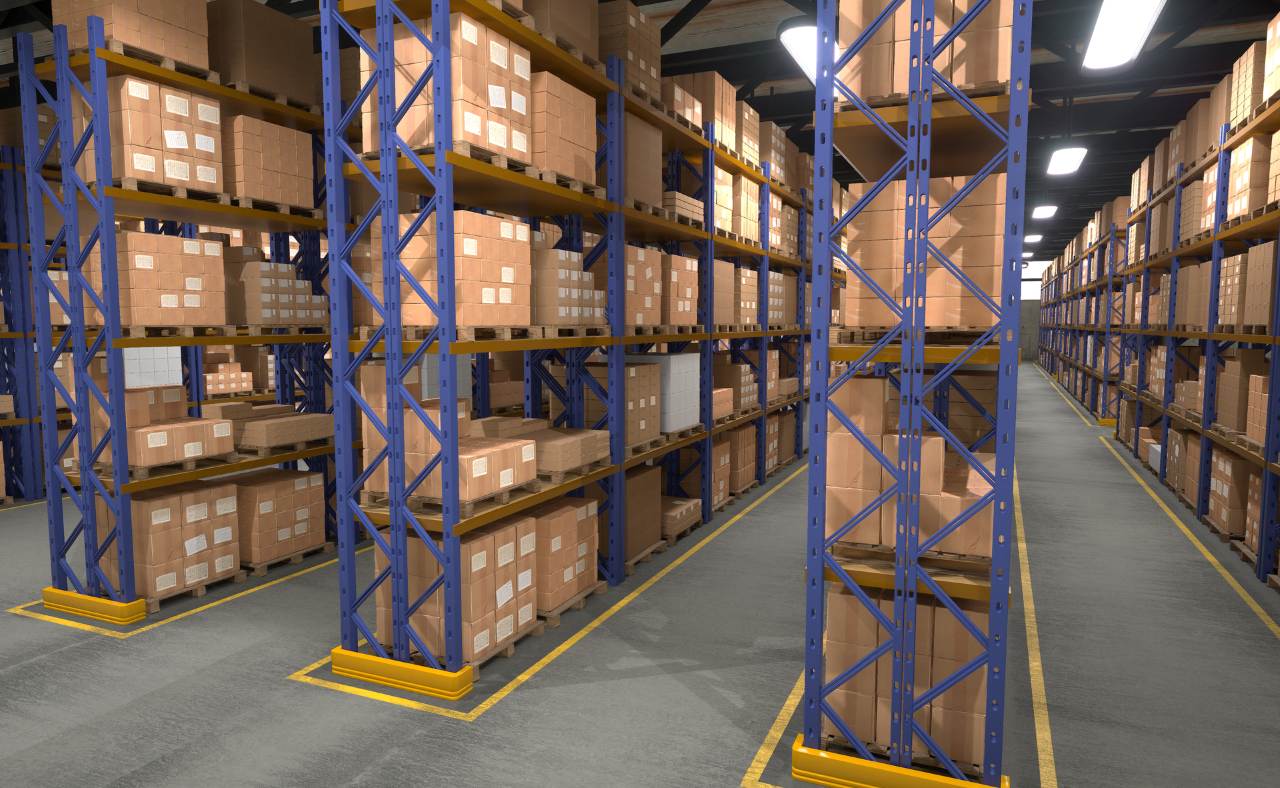Ecommerce Warehouse Layout: 9 Tips for Improved Efficiency

12/03/2025
Your warehouse layout might not be the first thing you think about when your ecommerce business starts growing—but it should be. Because once the orders start flooding in, your layout determines everything from how fast you can ship to how accurate your stock levels are.
And here’s the kicker: even the best inventory software won’t save you if your warehouse is a maze of bottlenecks and bad lighting.
Let’s break down how to create an ecommerce warehouse layout that actually works—and keeps working—as you scale.
Why Warehouse Layout Matters in Ecommerce
In ecommerce, speed matters. So does accuracy. And the only way to consistently deliver both is with a warehouse setup that supports the entire fulfilment process.
A smart layout does more than just store your products—it reduces picking errors, shortens travel time, improves team safety, and keeps everything flowing when peak season hits. It can also reduce the need to hire extra hands just to keep up.
Put simply: better layout, better business.
Assess Your Warehouse Needs First
Before you start moving shelves and drawing up plans, ask yourself:
- What kind of products are you storing? (Small, fragile, oversized?)
- How many SKUs do you have?
- How often do you restock?
- Are you fulfilling B2C, B2B, or both?
And most importantly: how fast do you want to grow?
We’ve worked with ecommerce brands at every stage of growth, and one thing’s clear—guessing your layout needs usually means redoing everything later. Start by understanding your product flow and storage requirements. Then build around that.
Designate Clear Functional Zones
The most efficient warehouses are split into clear, defined zones:
- Receiving – where stock arrives and is checked in
- Storage – shelves, bins, racks, etc.
- Picking – ideally close to fast-moving items
- Packing – with enough space for staff, supplies, and boxing
- Shipping – a dedicated area for outgoing parcels
Each zone should flow into the next logically. No crossing paths, no walking backwards, no confusion. Think of it like choreography—everyone has their place, and everything has its route.
Prioritise Flow and Accessibility
A layout should support your team’s natural movements. That means wide aisles (for safety and speed), logical shelving (heavier goods at waist height, rarely picked items up high), and signage that actually makes sense.
Avoid dead ends or single-entry areas, and consider how trolleys or picking carts move through the space. It’s all about minimising backtracking and unnecessary steps.
Bonus tip: don’t underestimate the power of good lighting. It reduces errors, boosts morale, and makes your warehouse a safer space overall.
Store Fast-Moving Items Strategically
Every ecommerce business has those repeat sellers, aka the ones flying out the door daily. Don’t hide them at the back of the warehouse.
Place your fastest-moving SKUs close to the packing area to reduce travel time. This not only speeds up fulfilment but also helps reduce pick-path fatigue (which is real—especially on high-volume days).
Choose the Right Storage Systems
Not all shelves are created equal. Depending on what you sell, you might need:
- Pallet racking for bulk items
- Bin shelving for smaller SKUs
- Gravity flow racks for faster picking
- Mezzanines to take advantage of vertical space
Choose flexible systems that can scale with your business. If you’re not sure where to start, our team at Future Pro Logistics can help you assess your space and recommend systems tailored to your product range.
Streamline the Picking Process

Picking is where time is won or lost. So keep it simple.
Consider zone picking (where staff stay in one area), batch picking (collecting multiple orders at once), or wave picking (grouping orders by shipping deadline or carrier). Whichever method you choose, make sure it's mapped out clearly and supported by your warehouse management system.
Ensure Smooth Packing and Shipping Areas
The packing station needs to be functional, not fancy. Think clean tables, label printers within reach, a clear area for completed orders, and easy access to packing materials.
Your shipping zone should be close enough to dispatch points (loading bays, courier pick-up areas, etc.) so completed parcels don’t have to travel across the warehouse again. That’s a classic layout mistake—and easily avoided.
Use Technology to Support Layout Efficiency
Your warehouse layout shouldn’t operate in isolation from your tech. Barcode scanners, real-time inventory management, and warehouse management systems (WMS) help your layout do its job more efficiently.
Even simple tools—like shelf labelling that syncs with your order system—can cut down on errors and help new staff get up to speed faster.
Also, don’t forget predictive analytics: by understanding order patterns, you can rearrange layout zones proactively ahead of sales surges or seasonal spikes. (It’s one of the lesser-known benefits of a good WMS.)
Regularly Review and Optimise Your Layout
Warehouses aren’t static. As your SKU count increases, customer habits change, or new products are launched, your layout needs to evolve.
Set a regular review schedule—quarterly is a good start—and don’t be afraid to change things. Ask staff for feedback. Walk the pick routes yourself. Run time trials if needed.
And if your team’s always bumping into the same problems? That’s usually your layout trying to tell you something.
Final Thoughts
A well-planned ecommerce warehouse layout doesn’t just support order fulfilment—it drives it. And in a world where next-day delivery and seamless returns are the norm, getting this right can give you a serious competitive edge.
Whether you’re just starting out or managing a fast-growing catalogue, it might be time to step back and ask: is your layout helping your business grow—or holding it back?
At Future Pro Logistics, we help ecommerce brands improve operations from the ground up, including layout design, warehouse set-up, and scalable fulfilment. So if you’re ready to reduce errors, boost picking speed, or explore end-to-end fulfilment services, reach out to us today.
 Who We Are
Who We Are
 Accreditations
Accreditations
 What We Do
What We Do
 IT Solutions
IT Solutions
 Our Warehouses
Our Warehouses
 Contact Us
Contact Us
 Our Partners
Our Partners
 E-commerce
E-commerce
 Start up
Start up
 Alcohol and Drinks
Alcohol and Drinks
 Health & Beauty
Health & Beauty
 Electronics
Electronics
 Amazon Order Fulfilment
Amazon Order Fulfilment
 International Road/Air/Sea
International Road/Air/Sea
 Parcel Deliveries
Parcel Deliveries
 Outsourced Warehousing
Outsourced Warehousing
 Van and Pallet Deliveries
Van and Pallet Deliveries
 Get a Quote
Get a Quote